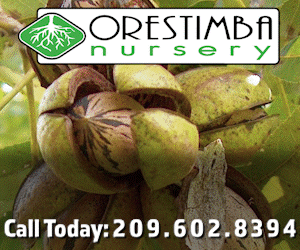
USDA encourages California walnut growers to report recent winter freeze losses to their local Farm Service Agency (FSA) office as they may be eligible for cost-share assistance through the Tree Assistance Program (TAP).
Growers in the northern San Joaquin and Sacramento Valleys have been reporting dieback in young and old orchards as well as trees not leafing out as a result of freeze damage last autumn and winter. Freeze damage in young walnut trees produces bark discoloration in the wood. Affected branches or trees dehydrate mainly from the top and show tip dieback.
According to UCCE farm advisors, trees will harden ahead of freeze conditions by developing processes of resistance to cold and frost. This was not the case in November and early December 2020. CIMIS weather data during that period showed severe temperature fluctuations, which place high amounts of stress on trees, and mild/dry weather following the event worsened effects from stress.
Local FSA offices can help assess TAP compensation eligibility from tree losses growers have experienced as a result of freeze damage. According to USDA, TAP “provides financial assistance to eligible orchardists and nursery tree growers to replant or rehabilitate eligible trees, bushes and vines lost by natural disasters.”
Maria Perez, county executive director for Stanislaus County FSA, explained basic eligibility requirements growers must meet for reporting to the program. “There’s a time frame on it,” she said. “They have 90 days after the disaster event or the date when the loss is apparent [to report].”
Perez said that growers must submit a proof of ownership for the property on which trees are damaged and a tree count on the block or orchard as well as how many trees are damaged/dead. However, she added that losses need to surpass normal mortality rates for a given season in order to be eligible for compensation.
“It’s not like, ‘Hey, you have dead trees, come on in,’” she said. “There’s a normal mortality to meet first.”
According to TAP, eligible trees, bushes or vines must have suffered more than a 15% mortality loss on top of normal mortality rates to be considered an eligible loss. The loss must have also been able to be prevented through reasonable and available measures, and it must be visible to the FSA loss assessment representative that will visit the property. Additionally, according to USDA, if the loss is no longer visible, FSA may accept other loss evidence and determine whether that other evidence substantiates that an eligible loss due to natural disaster occurred.
Contact your local FSA office for more information using USDA’s Service Center Locator.
















